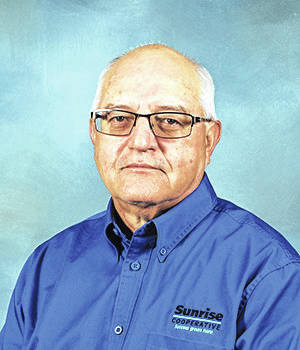
With the cancelling of this year’s OSU Farm Science Review, a new “virtual” format review is available online in the comfort of your home.
No walking will be necessary except to get a drink of your favorite beverage in your home and you can hear and participate in some of the sessions at this year’s review through a Zoom capability. The review will take place Tuesday, Sept. 22 through Thursday, Sept. 24 and in many cases you can participate in some sessions as they unfold. If you miss a program which interests you, log in later to catch it. Log on to fsr.osu.edu to access the programs. By logging on early you can look at the program and see what is available and when it will take place. Some examples of things you can see are field demonstrations on how to fertilize efficiently as well as “Ask the Expert” on “Prospects for US Exports,” “Farm Neighbor Laws,” “Keeping Backyard Poultry Happy,” and “Keeping Horses Healthy” to name a few. Take time to get to know the virtual FSR website before the event if you can as it will take some time to learn how to find what you are interested in. There is no admission fee.
Ag cash rent survey results
Barry Ward, who works with the OSU cropland cash rent survey program, just published his findings for western Ohio. He asked several ag producers for their input in what farmland cash rent will do in 2020. Barry’s findings can be found on the website at farmoffice.osu.edu. He has made his findings for different parts of western Ohio, and if you are working to renegotiate your farmland cash rent you may find some information to help you. In general, Barry is projecting cash rents to be flat to somewhat lower in the western counties of Ohio.
Additional material on this website includes crop budgets for 2020 and custom rates for common types of field work. One nice thing about the budgets is you can plug in many of your own costs for figuring projected income.
Ask the expert
I recently asked Jim Corbet, who is a Wright State University graduate and works for Sunrise Cooperative as an agronomy solutions advisor in Greene and parts of Clark and Madison counties, what his observations were related to farming in 2020. According to Jim, “the 800 pound gorilla in the room” has been grain prices and their volatility. It has been difficult to market grain at break even or profitable levels and these opportunities have been short lived.
Another challenge for farmers has been the wet spring which hampered the planting of crops in a timely fashion with a few fields not getting planted at all.
“Rainfall has been very scattered with many farms north of US Rt. 35 going from looking good to dead plants within a couple of weeks of time due to hot dry weather,” he said. He recently made a trip from Jamestown to Cedarville and “smelled a different smell and realized he was smelling the corn drying; the plants were cooking in the 90 degree heat.” Some of the most profitable fields have been wheat at 80 bushels/acre and some double crop soybeans projected to be above 35 bushels/acre. As it happens many years, the farms which received timely rainfall in late summer will yield the best corn and soybeans.
Lawn challenges
September is usually the time to reseed lawns with the cooler temperatures, rainfall, and less weed pressure. I can’t stress enough to remember to get good-seed to-soil contact to increase your chances of a good stand of grass. Be careful to get the best grass seed possible which will do well in your situation whether it is shaded or in bright sun or a mixture. Plan to use some starter fertilizer, and apply water daily to get the seeds to germinate properly unless a rainfall event occurs. Just broadcasting grass seed on your lawn will not result in much success. The seeds must have soil contact. In some cases this may mean using a slit seeder or tearing the lawn up and starting from scratch with bare soil.
When putting your effort into this project, get a soil sample and have a soil analysis done to help you know what the soil needs to provide a good seedbed for the grass to grow. Do not wait on the soil test results to plant the grass seed. You can apply additional fertilizer and materials to alter the soil pH later. More information as well as a list of soil testing labs can be found in the OSU Extension fact sheet 1132 titled “Soil Testing for Ohio Lawns, Landscapes, Fruit Crops and Vegetable Gardens.” It can be downloaded at bit.ly/32Jx5rP. A good YouTube video on complete lawn renovation can be found at bit.ly/3iFgtXB.


